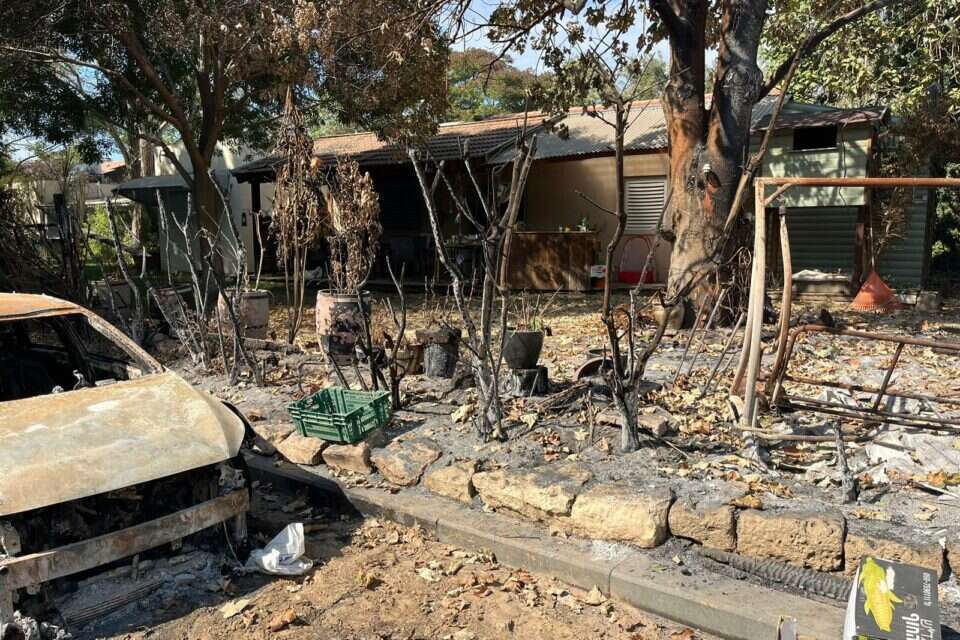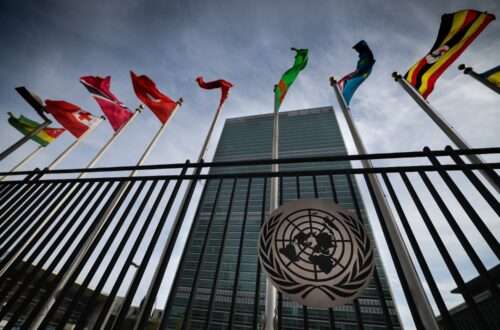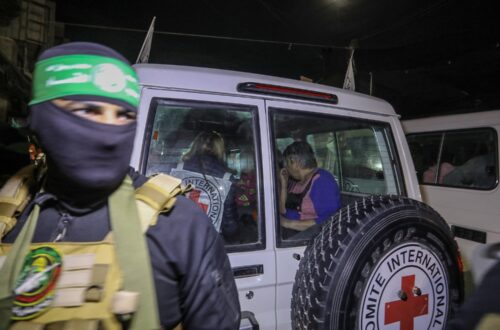1.
I hate to say “I told you so” but sometimes there’s no choice. From my journalistic perch, it was a topic that I shouted about time after time, with no one among the decision makers picking up the gauntlet.
In the autumn of 2012, Israel launched Operation Pillar of Defense, which lasted only one week and included air strikes on 1,500 Hamas targets. Only two years later, however, we set out on Operation Protective Edge. By then, Hamas had twice as many rockets as it had had two years previously.
Video: Reuters / Israeli firefighters attempt to put out fires after rockets fired from Gaza
How did this happen? The answer is that Israel knowingly enabled Hamas to rearm under its nose, again and again and again—and not just to rearm but to do so at a frenetic pace. (Almost all ammunition captured on the murderers’ bodies in the past two weeks was of home manufacture; so say the combat engineering officers who gathered it.)
This blindness drove me mad. After all, Israel controls the entrances to the Strip, blocks smuggling from the Mediterranean, and inspects—or at least is supposed to inspect—every item brought into Gaza. If so, why did we not even try to condition the supplies on their not reaching Hamas’ hands? We knew what they were doing with it, didn’t we?
Right after the fifty days of Protective Edge, Israel restored the supply of electricity to the Strip, along with water, cement, steel, chemicals, and the other components that Hamas used to build up its advanced army. So let’s say that in 2012–2014, Israel hadn’t yet realized that Hamas could amass such power on its own. But after Protective Edge, the second major operation within only two years, it already cried to the heavens.
Nevertheless, knowingly and with full authorization, all the decision-makers, from all across the political spectrum and the military echelon, allowed these materials to flow in even though they knew they’d be turned against us. With the exception of one task force, run by the then-GSS senior official Meir Ben-Shabbat in 2014, they gave the ritual of operation-rearmament, operation-rearmament to repeat itself without even trying to drain the swamp.
Why are we allowing electricity and water, at our expense, to reach the rocket production lines and the bomb factories? The question became many times more pointed after Operation Guardian of the Walls, in 2021, when U.S. President Biden said it aloud: Go ahead and rehabilitate Gaza but don’t give Hamas a chance to rearm. We had a political instrument of the highest order, but no one wielded it.
I’m not saying these things with hindsight. In April 2015, a year after Protective Edge], I wrote: “Israel is handing Hamas the armaments for the next round. After we saw Subterranean Gaza, we saw how hard it was to destroy the tunnels and paid a price of blood dearer than gold. It’s impossible to understand why Netanyahu and Moshe Yaalon (defense minister at the time) are repeating the same mistaken policy and sending construction materials into Gaza.”
In May 2021, after Guardian of the Walls, the minister of defense then, Benny Gantz, told us in a telephone briefing, “The organizing idea is not to go back to the pre-operation situation.” If so, I asked, why allow materials to enter that you know Hamas will use to rebuild itself? His answer was: “It can’t be helped.”
Before and after that moment, in innumerable tweets and in other forums that I had access to, I cried out against this fiasco. “Any humanitarian relief for the Strip will only lower the pressure on Hamas, let it profit from the inflow of money, and improve its military capabilities more easily,” I wrote when Avigdor Liberman, as Minister of Defense, worked out terms with Cyprus to build a port for the Gazans on that nearby island.
“A state that arms its enemies,” I tweeted in August 2021. When the Coordinator of Operations in the Territories took pride in adding natural gas to the list of resources for Gaza, I wrote: “Dear Hamas terrorists, since you’ve deigned, in your generosity, not to fire missiles at the People of Israel for a whole month, we’ve decided to expand trade with you by sending you energy supplies. This will make it easier for you to rearm, fire rockets at us again, and hunker down in the tunnels in the next round of battles. Sincerely, State of Israel.”
November 2018: “A little food for thought, of which the cabinet ministers should partake: How is it that we’re undertaking a major operation against Hamas for the fourth time (!) in the past decade, not to speak of the rounds in the middle?” Also in June 2018: “Gaza deserves the same judgment as Iran, the ayatollahs as Hamas. So why are the United States (under Trump at the time) and Israel strangling Iran and allowing Gaza to blossom?”
These are only a few examples. It’s all I could do from the journalistic grandstand. This brings me to an additional group that could have pounded the table no less than the statecrafters and generals: the media. After all, it’s the role of media to criticize governing authorities, point to deficiencies, reveal blunders.
But no: I don’t remember even one of my journalistic colleagues, let alone the ballyhooed defense commentators, challenging the system in this matter. Had the media cried out, things would have changed or at least improved. But they were busy running with the pack and shouting “Anyone but Netanyahu” instead of testing the policies of Netanyahu and his associates.
All of which not only bemoans the past but also learns lessons for the future. Once this war is over, Israel must insist that the entity that will operate in Gaza won’t be able to build military strength. Pure and simple. Also, Israel has to demand, right now, the expulsion of that Satan’s well, UNRWA, from the Strip.
You can install an international regime there, bring in the UN High Commission for Refugees, or scatter the Gazans all over the world. One thing must not happen: reestablishing a military force of terror and incitement in Gaza.
2.
While everyone at the top was blinded, some of those in the field saw what was coming. Dvir Lisha was only three months into his service at the base in Zikim. He was 21 when he fell, the first casualty to be buried at Mount Herzl the day after the slaughter.
He was the third-born son of Nava and Nissan Lisha, with whom he was evicted from Neve Dekalim in Gush Katif in the “disengagement.” “The Palestinian enemy has been celebrating its victory for nineteen years now, with the help of a mortar shell made of a highway signpost to which they soldered three wingtips,” the grieving father says in frustration as he contrasts this with Israel’s technological might.
Since the eviction, the family has been living in Nitzan. Dvir, after spending two years learning Torah at Yeshivat Oz ve-Emuna in south Tel Aviv, enlisted in Battalion 51 of the Golani Brigade. In the weeks and the days preceding the attack, he shared his concerns about what was happening across the border with his family.
“He saw their maneuvers and preparations on the cameras and reported them. In the main, he spoke with his sister and said they’d be coming by the thousands and hundreds of people would die, that a massacre would happen,” Nissan recounts.
Dvir documented his warnings in his last chats on WhatsApp. On October 3, four days before the war began, he posted video of Hamas terrorists training on the border across from Netiv Ha’Asara. In his family’s group, he wrote sarcastically: “Anyone looking for an attraction on the intermediate days of Sukkot is invited to the Hamas fence for a stunning display of uncommon military capability. Recommended for families and children aged 11 up.” Another photo, lifted from the intelligence cameras’ screenshots, shows twenty or so Hamas terrorists standing in a roll-call, equipped with weapons and vests and ready for action. They even had a photographer to take their picture. It was all there for anyone to see. But one set of eyes didn’t want to see: ours.
“What did you think when he told you this?” I asked. “You know, what everyone thought. That the business is under control,” says the bereaved father. The stunning blow did not overwhelm the parents’ morale. The moment the shiva’ for their son ended, they visited other casualties’ homes, offering consolation, strengthening themselves together, encouraging each other, and even making each other smile.
He doesn’t point fingers. “It was a spiritual failure; the lesson is spiritual. As a believer, I find it clear that there’s divine providence for everything. It doesn’t take such a hair-raising event to realize that it’s sending a message. Look, it’s not just a military loss, but the humiliation” they made fools of us. All the warplanes, the helicopters, and the Iron Dome that are flying over my head now. And the whole world coming here to learn how to fight terror and how to fight wars. But then a kid from Gaza in sandals tramples all over us, makes us into absolute nothings, and no defense system works.
“I see a message in this. The first is unity. The Holy One blinded us so that we would wake up and stop a moment before fraternal war. We were about one step away from it. Yes, it’s because of lies and brainwashing from the media, but people believed it. What happened here is meant to remind us that we’re united inside and that the disputes are only external.
“The second message is the leaders’ eyes have to be opened. They’re trying to make peace and sign agreements with a cruel enemy whose only goal is to destroy us. Instead of managing the conflict—the enemy has to be defeated. Instead of trying to make peace with a merciless enemy who has no wish whatsoever to make peace—we’ve got to fight [him] and banish him from the entire Land of Israel. Instead of allowing them to govern and thus to set up terror states next to our cities and settlements—remove them to countries that speak their language. Instead of treating them as partners in a dream—realize that their language is the language of force and it’s the only way to create peace here….
“We have to stop this fake moralism that says you can’t hit a hospital, which is really a house of terrorists because a terrorist is hiding behind an injured girl. It’s fake moralism. I pray that a different way of thinking settles into our leaders and that the spirit of heroism won’t be deterred by elements that put fear into them in the guise of humanism and morality.
“And the third message—to our amazing people: we were privileged to ascend to our Land, establish a state, and consolidate it. That’s what our parents did. Now it’s time to inject into it the inner content that it deserves: the State of Israel is the vehicle of God’s manifestation in the world. A light unto the nations—in Torah, in kindness, in true morality, in bundling the sacred and the profane together. If each of us takes a step in this direction, we’ll realize that the incredible shock that we’re in the middle of now is really the birth pangs of the inner essence of the State of Israel, which needs to be revealed.”
3.
Only a spiritual perspective, perhaps, can lend meaning to the incomprehensible spectacles that I beheld at Kibbutz Be’eri this past Tuesday. A delegation of Members of Knesset, diplomats, and journalists, headed by Sharren Haskel, visited the place to see the atrocity with their own eyes and get out the proof. Here’s a boy’s shoe, tossed aside on the lane leading to the front door of his house. He must have fled for his life; who knows whether it was to the Jewish side or to the Arab side? In another dwelling: a children’s cabinet with its top drawer open, as if frozen in time. Everything all around is burnt, covered with dust, mutilated.
The houses are sooty, demolished, shattered, or sometimes intact but redolent with the nauseating stench of death that my senses had that never smelled and that cannot be conveyed by camera or in words. It’s not ancient history. It’s something that happened only a few days ago. It can’t be grasped.
A dental clinic pierced with Kalashnikov bullets. Inside: devastation. The small dining hall, burnt to the ground and leaving only a few black fragments behind. Here, according to the rumors, dozens of members of the kibbutz were rounded up. For the time being, no one wants to say what became of them. No one wants to specify the number of casualties and missing persons from Be’eri. It’s a statistic that can’t be digested, so it seems.
In Europe, I often visited Jewish villages that had been wiped out and ghettos that had been destroyed. There, it was a return to the past; here it’s fresh events, what one might call a local Auschwitz, the 2023 model. But what the hell have historical memories of the Jewish exile got to do with flourishing Jewish settlement in the Land of Israel?!
“Mezukeh,” purged, sprawls the black spray-painted inscription over the entrance to the house. It’s meant to confirm to the rescue forces that there are no terrorists here anymore. “Nukah,” cleaned out, someone sprayed on another wall. But the day after our visit, we discovered the corpses of a mother and her son, slaughtered and burnt, in one of the attics. Nothing here had been purged or cleaned out. Instead, the place had been befouled, desecrated, stained with fresh blood.
The shattered cars and detonated houses became monuments. Grass still grows among them, trees bud, and the elders’ scooters stand. That’s how my “visit to the kibbutz” looked.
Hundreds of members of Be’eri were murdered and massacred, bound and abducted. But the heart cannot accommodate what the eyes are seeing and the mind finds no words to describe what the heart is feeling. What happened here? A pogrom? Riots? Genocide? Another Holocaust?
These were more than murders and abductions; they were a monstrous act of madness, unleashed on a massive scale against children, women, the elderly, and of course adults, by children and adults, women and elders. Every kind of atrocity on earth happened here. Every bizarre method of killing that you can imagine that you can’t. All the tortures that even paper cannot tolerate, stopping short only at cannibalism.
Hebrew and, perhaps, other languages still lack a term to describe the events of Simhat Torah 5784, October 7, 2023. It’s much more than terror, or antisemitism, or violence, or war. It’s something for which no word as yet been invented. “We don’t grasp it; it can’t be grasped,” the members of the delegation say to each other, and then they remember that only this remains of the slaughterhouse that ZAKA treated with sacred devotion.
Perhaps we will be able to digest what happened here only when it retreats into time. Perhaps, just as people today understand that the Holocaust powered the establishment of the State of Israel, so will Hamas’ onslaught give rise to something that we cannot pinpoint at the moment. Maybe.






